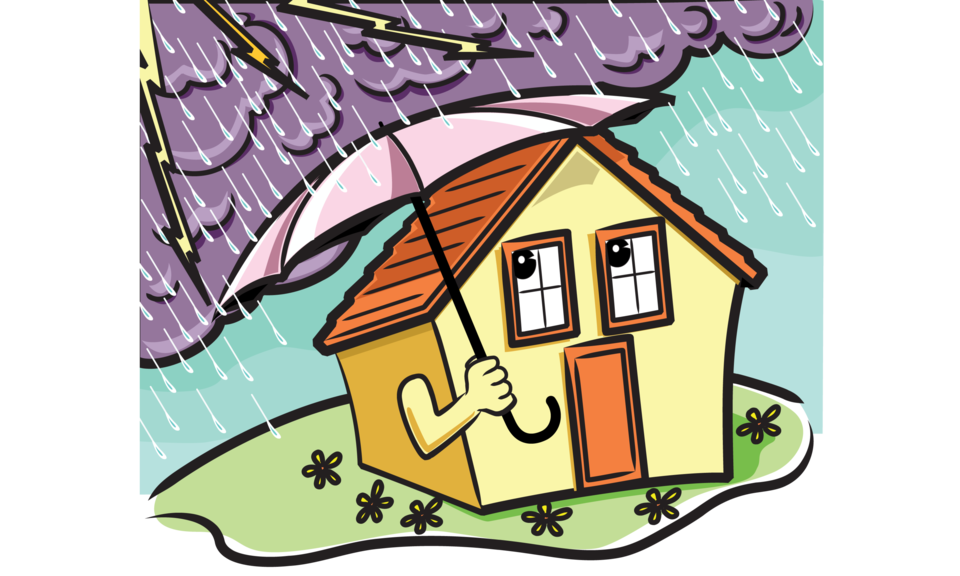Arlington government leaders continue to put the procedural steps in place to change the way county property owners are charged for stormwater-related costs.
As part of their fiscal 2024 budget plan, County Board members will consider moving from the existing funding stream (a tax levied based on the value of property) to a fee-based one that is dependent on the amount of impervious surface on any given lot.
Once adopted – and it almost surely will be adopted – the new arrangement will take effect as next year dawns.
County Board members said making such a change would connect tax burdens more directly to the actual impact a property has on the government’s stormwater infrastructure.
“The shifting of the rate structure is the right way to do this,” County Board member Katie Cristol said at a recent work session on the topic.
The result, in general, would be a higher bill for homeowners; the current median tax for stormwater (a 1.7-cent-per-$100 property-tax add-on) equals $136 for single-family homeowners, while going to the new system would raise that median rate to $232, based on a Jan. 31 staff presentation to County Board members.
(The public can search for “stormwater utility fee estimator” on the county government’s Website at arlingtonva.us and check the estimated charges for every parcel.)
Efforts to revamp the existing system have been in the works since 2020, but like so many issues, it’s likely many property owners are not yet in the loop.
“We want to be thorough” in informing the public, County Board member Matt de Ferranti said.
Most affected will be organizations (such as religious institutions and non-profits) whose property is exempt from taxation, including the current stormwater tax, but would be required to pay the new fees.
“The challenge for us will be [explaining the matter to] those who were formerly exempt,” County Board Chairman Christian Dorsey.
Indeed: Some local churches, for instance, would find themselves facing bills of $10,000 or more under the proposed arrangement. Current state law does not allow the county government to exempt these properties for the fees as they have been exempted for taxes, county officials said.
Forcing non-profit property owners to pony up may draw brushback, but County Manager Mark Schwartz said the community as a whole needs to share the burden in addressing an overwhelmed stormwater-management system.
County officials estimate that more than $330 million will be required over the next decade to augment existing efforts, on top of several bond package that already have been put to voters.
“There is just a huge increase in the level of effort that occurred” to address the matter in recent years, Schwartz said. “That’s going to be picked up by the ratepayers.”
As proposed by county staff and required under state law, there would be some credits allowed for a variety of reasons, which would allow property owners to reduce their overall bills by up to 35 percent.
As the public-education effort ramps up, Arlingtonians – already accustomed to dealing with acronyms – will need to learn another. Stormwater fees in future will be billed based on ERUs (equivalent residential units), which will equate to 2,400 square feet of impervious surface on a lot.
More than 70 percent of single-family lots in the county would be billed at 1 ERU, resulting in charge in the $230 to $250 ballpark. Others would pay more or less, depending on what category their homes are placed in.
Since modern imaging systems make it relatively straightforward to determine the impervious surface on any given lot, why not bill homeowners for the exact square footage involved, rather than broader categories that effectively work out to small, medium, large and supersized?
County officials say dealing with each of the more than 27,000 single-family lots would place a difficult administrative burden on staff. And because no conversation in county government these days is complete until the word “equity” is shoehorned into the equation, a staff report noted (without further explanation) that using broad tiers somehow would promote it.
For multi-family units, proposed annual fees are proposed to be based on a flat 0.18 ERUs per dwelling unit. Commercial property would be taxed depending on the actual amount of impervious surface.
Lurking in the discussion was the possibility that county officials, once they get the program up and running, could use it to encourage certain behavior among property owners by using a combination of carrots and sticks.
Board member Takis Karantonis floated the idea that there could be ways, for instance, to financially penalize owners of large parking lots who didn’t take steps to reduce their overall impervious surfaces.
While offering some questions to staff, the five County Board members seemed in sync that implementing a change was the best step forward.
“This has been . . . an enormous undertaking,” Dorsey said. “Let’s move it toward the finish line.”
If the measure is enacted as part of the fiscal 2024 budget process, it would go into effect next January, with bills due June 15 and Oct. 5 annually. Those are the same dates as property-tax bills are due.



